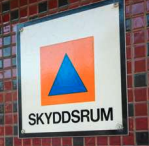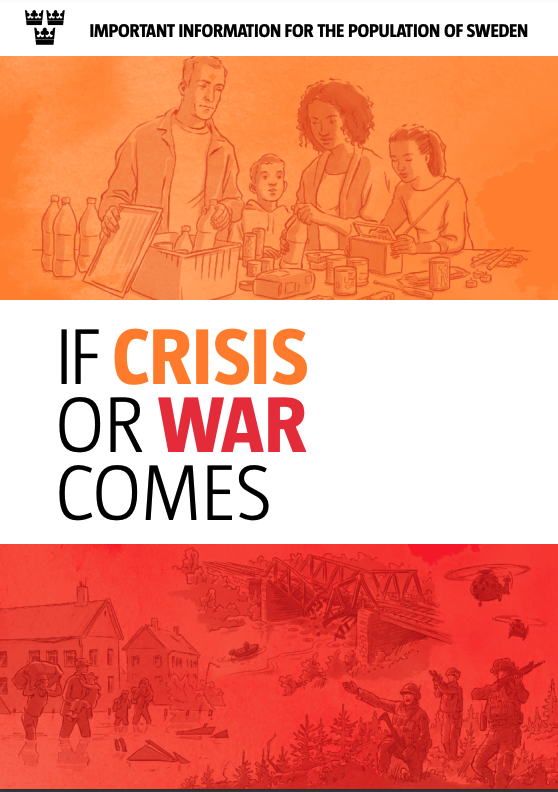During a dire situation – be that a natural disaster or a conflict, being ready and prepared for any emergency becomes paramount if we are to remain safe and well.
As a company NORDISK PREPPER is all about being prepared for your next outdoor adventure. We hope one day to become your go-to resource for all things clothing or equipment related to being outdoors. Our mission is to find, source and offer our customers new and unused and second hand outdoor equipment and kit.
Being prepared.
Now for us there is an overlap between how you prepare for camping in the forest, going for a hike, running the trails and being prepared for an emergency. You need to have a plan of action – think about access to water, what are you taking to eat, if you are sleeping overnight outside what do you take for warmth and comfort, how do you select somewhere which is safe to stay, how do you let somebody know where you are, etc.
As a society, whether you are in Sweden, the Nordics, Europe or the rest of the world, we all have a responsibility to prepare in the best way possible. For us as people to be able to cope with a difficult situation should it arise, we need to be prepared and be ready to help others.
The Essentials in an emergency.
What is most important is that you, and your family have access to water, have food to eat and warmth, and a roof over your head. Plus, you’ll need some way to keep up to date with what’s going on and receive information and instructions.
So, it’s important then to spend time documenting a well-thought-out plan that identifies safe routes “out of town”, assembly points for evacuation and know where your local underground shelters are.
In our blog we wanted to lay out some basic facts about how to be better prepared in an emergency in Sweden, from knowing where your closest underground shelter is to what essentials to pack if you need to take shelter.
This will be one in a series of blogs to breakdown information for you to review, share and if needed or print off to keep close at hand. We will always be looking to add more information to the series from your feedback or ideas that you pass on to us.
So, first in our series on being prepared is to explain the how, what, where and why of Sweden’s underground shelters.



It all starts with the MSB.
The MSB (Myndigheten för Samhällsskydd och Beredskap).
MSB (Myndigheten för Samhällsskydd och Beredskap) is the Swedish Civil Contingencies Agency and is organised under the Ministry of Defence and it is responsible for taking actions before, during and after an emergency or crisis with regards civil protection, public safety, emergency management and civil defence.
According to the MSB a shelter is part of a building or other facility and has reinforced walls, ceilings, floors and doors capable of resisting blast waves and shrapnel, fire, nuclear radiation, and rubble from collapsed buildings.
Buy Better Quality For Less
Different items arriving daily. New & Unused, and Second hand.
What are underground shelters?
If you are in danger from an imminent natural disaster or risk of conflict, and there is no chance to set out to follow an evacuation route, then knowing where to seek shelter becomes critical.
Shelters have been a significant part of the Swedish civil defence plan for many years with almost 65,000 shelters in place, with space for approximately seven million people. The shelters have been built across Sweden, catering mainly to the larger population concentrations in towns and cities where it would be difficult to evacuate.
If you’re not yet familiar with a shelter, most are rooms set aside in the basements of residential buildings for small groups of people, schools and industrial buildings may also have shelters offering a slightly larger space and there are very large purpose built shelters designed to hold far bigger numbers of people.
Most shelters are used today for practical purposes i.e. somewhere to store your bike or may be park cars. In the case of high alert, the bikes, cars and whatever is being stored in the space must be removed and the shelter prepared within 48 hours.
The Shelter experience.
Each person is allocated 0.75 square metres of space, you bring your own food, water is provided but don’t forget life’s essentials such as toilet paper, hygiene items, medicines, documents of value and warm clothes.
Shelters are self-contained when it comes to being able to pump and filter air and have their own ventilation systems in order to keep toxic gases and radioactive dust out. The system can run off electricity if it is available or be manually operated. They also have heating and basic “dry toilet” facilities.
One point to remember is that you personally are not assigned to any specific shelter, you need to find whichever shelter is nearest and use that.
Make sure then to locate and find out the address and visit the shelters that are nearest to where you live or work during daylight so that you can fix the position in your mind and look for visual clues on how to get there in case it’s dark when you need to get to one. Remember you may not have a mobile phone signal in an emergency so don’t rely on finding it with your GPS.



How do you find the shelters?
On the MSB’s website there is a map of all Sweden’s shelters when the page opens you can narrow down the search to your local area, and the scale of the map shows where each shelter is located down to the street name.
In the search field type in your address / location and it will begin with finding the nearest shelters within 1 km, and can broaden that search for up to 5 kms away.
The building that contains a shelter will have a sign by the entrance to the building, and another one by the entrance to the shelter itself. The sign shows a blue triangle in an orange square, with the word ‘skyddsrum’. (See below example):

In an emergency, you can also seek shelter in other protective spaces such as in tunnels, basements or the metro.
If you don’t want to click the above link, this is the link to find the map of shelters in Sweden that you can copy into your browser and bookmark: https://gisapp.msb.se/apps/kartportal/enkel-karta_skyddsrum/
The MSB “If Crisis or War Comes” publication.
Working closely with local municipalities, the county councils, other authorities, organisations and the private sector the MSB sets out to proactively educate and inform society at large on how to be better prepared when facing a crisis.
The MSB has published “If Crisis or War Comes” – a brochure available in Swedish and English, it describes how the population of Sweden can become better prepared for the consequences of serious accidents, extreme weather, IT attacks or military conflicts. The brochure is also available as an audio version, braille and sign language. There are some links below where you can directly download the brochures as a PDF or you may prefer to go directly to the MSB website.
What should I bring to the shelter?
A flashlight and a radio are valuable just in case you need to provide some light and to get the latest information. If you have young ones with you, it can be good to have things that occupy them, such as books, card games, favourite toys or devices for them to play on with an extra set of batteries.
Below is a recommended list of what you should prepare and have ready to take, preferably packed in a bag ready to go at a moments notice. Remember you need to take into account how many people will be with you when it comes to allocating food, water and hygiene supplies:
- Flashlight
- Water (bottled)
- Food that can withstand room temperature and does not need to be cooked
- Hygiene products
- Toilet paper
- Medicines, prescription medication
- A first aid bag
- Warm clothing
- Seat pad
- Documents of value (ID card/driver’s licence, cash, account card)
- Paper printouts with phone numbers of family members, relatives, neighbours, the municipality, emergency rescue services, electricity providers, hospitals, etc.
- Door / car keys
- Mobile phone + charger or power bank
- A book, playing cards, board game, etc.
Hopefully it would only be a short duration that you would need to stay in the shelter for, so you are likely to be putting together a bag of supplies to be self-sufficient for a few days.
Making preparations at home for a longer duration.
Before you need to visit a shelter, hopefully you can make the time to do a more focused prepping. Could be then that you plan to be self-sufficient for a week or more, which means a lot of thinking around your food and drink consumption, and if you have sufficient prescription medication.
In the event of a disaster or conflict, it can mean there is a disruption to electricity, water supplies, the normal everyday services we rely on i.e. buses, trains and visiting your local supermarket or pharmacy to pick up your shopping.
Often the “supply chain”, think of it as the process of how the goods you consume are made, packed, warehoused, delivered to the supermarket and stacked on the shelves may also be disrupted. That means what products are on the shelves will sell out quickly – think of the COVID-19 pandemic and how particular items were stockpiled leaving empty shelves.
So, now that you have some time, think about what you need to buy and stock-up on supplies that should include non-perishable food items, bottled water, medical supplies (including first aid kits and prescription medications), hygiene products, and personal protective equipment (gloves, masks, etc). We will go into more detail on what to prepare in a later blog.
Listening out for Important Public Announcements (IPA).
Access to reliable communication channels is essential for staying informed and connected during a crisis, you’ll need to be able to receive important information from the authorities, mainly via radio station P4, and Swedens Television’s TV channels.
You can also go to the krisinformation.se website or call the information number, 113 13. In an emergency, you also need to be able to call the emergency services on 112.
The warning and information system IPA (important public announcement) is used in emergency situations – for example in the event of emissions of hazardous substances, fires where there is a risk of explosion, forest fires and other natural disasters.
It’s also important to establish communication protocols with family members, neighbours, and local authorities to share critical information and coordinate responses to emergencies.
So – I hope the above has given you some food for thought and you feel like you are able to put a plan together.
If you have any questions let us know, or any suggestions on what other topics you would like us to write about.
Subscribe and get 10% off today.
Get the latest news, new product arrivals and discounts straight into your inbox.
Subscribe & Get A 10% Discount.
Don’t miss out on news, the latest new products and special time limited offers 🙂



